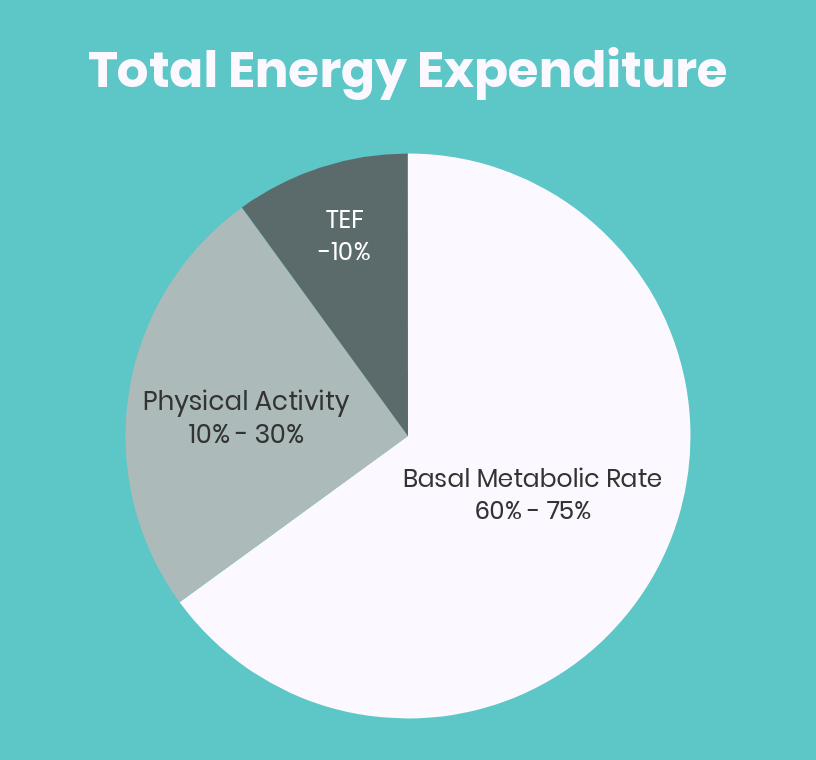Macro Calculator
Calculate Your Daily Macronutrient Needs for Optimal Results
Macronutrient Calculator
Calculate Your Macros
Macro Ratios by Goal
| Goal | Protein | Carbs | Fat |
|---|---|---|---|
| Balanced/Maintain | 30% | 40% | 30% |
| Fat Loss | 40% | 30% | 30% |
| Muscle Gain | 30% | 50% | 20% |
| Ketogenic | 25% | 5% | 70% |
Understanding Macronutrients
Macronutrients (macros) are the three categories of nutrients that provide energy and are required in large amounts by the human body: protein, carbohydrates, and fats. Unlike micronutrients (vitamins and minerals) needed in milligram quantities, macronutrients are consumed in gram quantities daily—typically 50-400+ grams per macro depending on individual needs, activity level, and goals. Each macronutrient provides calories and serves distinct physiological functions beyond mere energy provision.
The caloric values differ by macronutrient: protein and carbohydrates each provide 4 calories per gram, while fat provides 9 calories per gram—more than double the caloric density. This is why high-fat foods are very calorie-dense (nuts, oils, butter) compared to high-protein or high-carb foods. Total daily calorie intake is determined by summing calories from all three macros. For example: 150g protein (600 cal) + 200g carbs (800 cal) + 60g fat (540 cal) = 1,940 total calories.
Macro tracking involves calculating and monitoring daily intake of protein, carbs, and fats to achieve specific body composition goals. Unlike simple calorie counting, which only considers total energy, macro tracking ensures proper nutrient balance for performance, recovery, satiety, and health. Someone eating 2,000 calories from mostly carbs will have vastly different body composition outcomes than someone eating 2,000 calories with balanced macros including adequate protein. Flexible dieting ("IIFYM" - If It Fits Your Macros) allows food choice freedom as long as daily macro targets are met, making it more sustainable than restrictive diet rules.
The Three Macronutrients Explained
Protein: The Building Block Macro
Protein consists of amino acids—organic compounds that serve as the building blocks for tissues, enzymes, hormones, and immune function. Nine amino acids are "essential" (must come from diet); the remaining 11 are "non-essential" (body can produce them). Complete proteins contain all nine essential amino acids (most animal proteins, soy, quinoa); incomplete proteins lack one or more (most plant proteins). Protein's primary role is structural and functional—muscle repair, enzyme production, hormone synthesis, immune antibodies—though it can be converted to energy when needed (4 cal/gram). Adequate protein intake preserves muscle during calorie restriction, supports muscle growth when combined with strength training, increases satiety (most filling macro), and has the highest thermic effect (20-30% of protein calories burned during digestion). Recommendations range from 0.8g/kg (sedentary minimum) to 2.4g/kg (athletes, fat loss).
Carbohydrates: The Energy Macro
Carbohydrates are the body's preferred energy source, particularly for the brain (requires 120g glucose daily) and high-intensity exercise. Carbs are classified as simple (sugars: glucose, fructose, sucrose) or complex (starches and fiber: whole grains, legumes, vegetables). When consumed, carbs are broken down into glucose, used immediately for energy or stored as glycogen in muscles (~400-500g) and liver (~100g). Glycogen stores determine endurance exercise capacity—depletion causes fatigue and performance decline. Carbs provide 4 calories per gram and have medium thermic effect (~5-10% of carb calories burned during digestion). While not essential for survival (the body can produce glucose from protein/fat), carbs optimize athletic performance, support intense training, spare muscle protein, regulate hormones (thyroid, leptin), and improve adherence to diets by providing variety and satisfaction. Carb needs vary dramatically: ketogenic dieters consume <50g daily, while endurance athletes may need 400-800g daily.
Fat: The Hormone & Vitamin Macro
Dietary fat is the most calorie-dense macronutrient at 9 calories per gram, serving critical roles beyond energy: hormone production (testosterone, estrogen, cortisol all require cholesterol from fat), fat-soluble vitamin absorption (A, D, E, K), cell membrane structure, brain function (brain is 60% fat by dry weight), inflammation regulation (omega-3s vs. omega-6s), and satiety. Fats are categorized as saturated (solid at room temperature: butter, coconut oil), monounsaturated (liquid at room temperature: olive oil, avocados), polyunsaturated (includes essential omega-3 and omega-6 fatty acids: fish, nuts), and trans fats (artificial, avoid completely). Fat has minimal thermic effect (~0-3% calories burned during digestion). Very low-fat diets (<15% calories) can impair hormone production and vitamin absorption. Recommended intake is 20-35% of calories, with emphasis on unsaturated fats while limiting saturated fat to <10% and eliminating trans fats. Fat intake typically fills remaining calories after protein and carbs are determined.
How to Calculate Your Macros
Step 1: Calculate Total Daily Energy Expenditure (TDEE)
First, determine total daily calorie needs using the Mifflin-St Jeor equation to calculate Basal Metabolic Rate (BMR), then multiply by activity factor. BMR formulas: Men: (10 × weight kg) + (6.25 × height cm) - (5 × age) + 5. Women: (10 × weight kg) + (6.25 × height cm) - (5 × age) - 161. Activity factors: Sedentary: 1.2, Lightly Active: 1.375, Moderately Active: 1.55, Very Active: 1.725, Super Active: 1.9. Example for 30-year-old, 75kg, 175cm male, moderately active: BMR = (10 × 75) + (6.25 × 175) - (5 × 30) + 5 = 1,700 cal. TDEE = 1,700 × 1.55 = 2,635 calories/day.
Step 2: Adjust Calories for Your Goal
Maintain weight: Eat at TDEE (2,635 cal in example). Fat loss: Create 15-25% calorie deficit (500-750 cal below TDEE = 1,885-2,135 cal). Moderate deficits preserve muscle better than aggressive cuts. Muscle gain: Create 10-15% calorie surplus (250-400 cal above TDEE = 2,885-3,035 cal). Small surpluses minimize fat gain compared to aggressive bulking. Example: For fat loss at 20% deficit, target 2,108 calories daily (2,635 × 0.80).
Step 3: Set Protein, Then Carbs and Fat
Protein First (Priority Macro):
Set at 1.6-2.2g/kg bodyweight (75kg = 120-165g). Use higher end for fat loss/athletes. 150g protein × 4 cal = 600 calories from protein.
Fat Second (Essential Minimum):
Set at 20-30% of calories for hormone health. 2,108 cal × 0.25 = 527 cal ÷ 9 = 59g fat.
Carbs Last (Fills Remaining):
Remaining calories after protein + fat. 2,108 - 600 - 527 = 981 cal ÷ 4 = 245g carbs.
Final macros for fat loss example: 2,108 calories = 150g protein + 245g carbs + 59g fat. Adjust carbs vs. fat based on preference and performance—some prefer low-carb/high-fat, others high-carb/low-fat. Both work if protein and calories are equated.
Macro Tracking Tips & Best Practices
- Use a food tracking app: MyFitnessPal, Cronometer, or LoseIt make tracking easy with barcode scanners and large food databases. Log everything for 2-4 weeks to learn portions and build habits.
- Weigh food for accuracy: Use a digital kitchen scale (±0.1g precision). Measuring cups are inaccurate—40g peanut butter can vary 50-100 calories depending on packing density. Weigh raw meat, cooked grains.
- Prioritize protein target: Hit protein goal daily without exception. Carbs and fats can vary slightly day-to-day without impact, but protein consistency is critical for muscle preservation and satiety.
- Don't stress perfect precision: Being within ±5g protein, ±10g carbs, ±5g fat is close enough. Obsessing over exact numbers causes unnecessary stress and doesn't improve results versus 90-95% adherence.
- Plan meals in advance: Pre-log tomorrow's meals the night before to ensure macro targets are hit. This prevents end-of-day scrambling to "make macros work" and improves adherence.
- Create go-to meal templates: Build 3-5 "standard meals" that hit roughly ⅓ of daily macros. Rotate these regularly for simplicity while allowing flexibility for variety and social eating.
- Account for cooking methods: Oils, butter, and sauces used in cooking add significant calories/fat. Log the oil used to cook chicken, not just the raw chicken breast. Every tablespoon of oil adds 120 calories.
- Use the 80/20 rule: Eat 80% whole, minimally processed foods for health, satiety, and micronutrients. The remaining 20% can be treats/processed foods if they fit macros, maintaining long-term adherence.
- Adjust based on progress: Track bodyweight and measurements weekly. If not losing fat after 2-3 weeks, reduce calories by 10-15%. If not gaining muscle, increase calories by 10%. Macros are starting points requiring individualization.
- Don't track vegetables obsessively: Non-starchy vegetables (broccoli, spinach, peppers) are so low-calorie that obsessive tracking isn't necessary. Log them loosely or round to standard servings—they won't make or break progress.
Common Macro Tracking Mistakes to Avoid
- Setting protein too low: Many calculators recommend only 0.8-1.0g/kg—inadequate for muscle preservation during fat loss or muscle building. Use 1.6-2.4g/kg for optimal body composition results.
- Forgetting to track oils and condiments: Oil, butter, salad dressing, mayo, and sauces contain 50-200 calories per serving. Not logging these can create a 300-500 calorie daily tracking error.
- Using incorrect entries in tracking apps: Food databases contain user-submitted errors. Verify entries against nutrition labels or USDA database. A "medium banana" can range from 80-150 calories depending on database entry.
- Not adjusting macros as you lose/gain weight: As bodyweight changes, TDEE changes. Recalculate macros every 10-15 pounds of weight change or when progress stalls for 2-3 weeks despite adherence.
- Ignoring liquid calories: Juice, soda, alcohol, flavored coffee drinks, and smoothies can contain 200-500+ calories without increasing satiety. These often derail progress because they're not tracked or don't feel like "food."
- Overestimating activity level: Most people overestimate daily activity. Unless training 6-7 days/week intensely, "moderately active" (1.55) is appropriate. Overestimating inflates calorie targets, preventing fat loss.
- Giving up after one bad day: One day of overeating doesn't ruin progress—weekly average matters more than daily perfection. Get back on track the next meal rather than spiraling into multi-day binges.
- Neglecting micronutrients: Hitting macros doesn't guarantee health if food choices are poor. Include vegetables, fruits, whole grains, and varied protein sources for vitamins, minerals, fiber, and antioxidants.
- Weighing cooked vs. raw foods incorrectly: Nutrition labels reflect raw weight unless specified. 100g raw chicken ≠ 100g cooked chicken (loses water during cooking). Use raw weights when possible or find cooked database entries.
- Expecting linear progress: Weight fluctuates 2-5 pounds daily from water, sodium, digestion, hormones. Track weekly averages and monthly trends rather than daily weigh-ins. Focus on measurements, photos, and strength progress too.
Medical Disclaimer
This macro calculator provides general recommendations based on standard equations (Mifflin-St Jeor) and evidence-based macro ranges but cannot account for individual medical conditions, metabolic disorders, medications, genetic variations, or specific health requirements. People with diabetes, kidney disease, liver disease, cardiovascular conditions, eating disorders, metabolic syndrome, PCOS, thyroid disorders, or taking medications affecting metabolism should consult healthcare providers, registered dietitians, or endocrinologists before implementing calculated macro targets. Very low-calorie diets (<1,200 cal women, <1,500 cal men), very high-protein diets (>2.5g/kg), or ketogenic diets require medical supervision for certain populations. Pregnant and breastfeeding women, children, adolescents, older adults, and competitive athletes have unique nutritional needs not fully captured by standard adult calculations. Individual macro needs vary based on genetics, insulin sensitivity, training history, recovery capacity, gut health, and stress levels. This calculator assumes general health, adequate sleep, managed stress, and consistent training. Macros are starting points requiring adjustment based on individual response—track progress objectively (bodyweight trends, measurements, photos, performance) and adjust accordingly. Obsessive tracking can trigger disordered eating patterns in susceptible individuals—prioritize overall health, relationship with food, and psychological well-being over perfect macro adherence. This tool is for educational purposes only, not medical advice, diagnosis, or treatment. Always consult registered dietitians, sports nutritionists, or healthcare providers for personalized nutrition recommendations, especially when managing chronic conditions, eating disorders, or competitive athletics.
About the Author
Adam
Co-Founder @ RevisionTown
Math Expert specializing in various curricula including IB, AP, GCSE, IGCSE, and more



